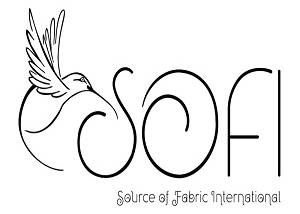As the fashion industry increasingly turns towards sustainability, the role of PFP (Prepared for Print) fabrics has gained significant attention. These fabrics are meticulously prepared to ensure high-quality print results, but they also offer several advantages that align with the principles of sustainable fashion. This article explores the role of PFP fabrics in sustainable fashion, highlighting their benefits and how they contribute to a more eco-friendly industry.
Understanding PFP Fabrics
What Are PFP Fabrics?
PFP fabrics, or Prepared for Print fabrics, undergo a specialized treatment process to remove impurities and prepare the fabric surface for optimal print results. This preparation involves various steps, including scouring, bleaching, and sometimes mercerization, to ensure that the fabric can absorb dyes and inks uniformly.
- Optimal Print Quality: The primary purpose of PFP fabrics is to achieve vibrant and precise prints, making them a favorite in digital printing applications.
- Versatility: PFP fabrics can be used for a wide range of textile products, from fashion garments to home textiles, due to their superior print quality.
5 Key Benefits of PFP Fabrics in Sustainable Fashion
PFP fabrics sustainably play a crucial role by offering a range of benefits that align with eco-friendly practices. Here are five key advantages:
1. Reduced Water Consumption
- PFP fabrics require less water during the dyeing and printing processes compared to untreated fabrics. The thorough preparation reduces the need for multiple washes and rinses, conserving water—a critical resource in a sustainable fashion.
2. Enhanced Durability
- The preparation process for PFP fabrics often includes treatments that enhance the fabric’s strength and durability. This indicates that clothing composed of PFP materials has a higher chance of lasting longer, which lowers the need for frequent replacements and adds to the sustainability of a wardrobe.
3. Lower Chemical Usage
- Since PFP fabrics are already treated and cleaned, they require fewer chemicals during the dyeing and printing stages. This reduction in chemical usage is a significant step towards minimizing the environmental impact of textile production.
4. Improved Color Fastness
- PFP fabrics are known for their excellent color fastness, meaning the colors in printed designs remain vibrant for longer. This longevity reduces the need for re-dyeing or replacing garments, supporting the sustainable principle of creating long-lasting products.
5. Waste Reduction
- The precise print results achieved with PFP fabrics mean less material waste during production. Misprints and color inconsistencies are minimized, leading to more efficient use of resources and less fabric ending up in landfills.
PFP Fabrics and the Future of Sustainable Fashion
The integration of PFP fabrics in sustainable fashion is not just a trend but a critical step towards a more responsible and environmentally conscious industry. As consumers become more aware of the environmental impact of their choices, the demand for sustainable textiles like PFP fabrics continues to grow.
PFP fabrics offer designers and manufacturers a way to produce high-quality, durable, and eco-friendly garments. By reducing water and chemical usage, improving the longevity of products, and minimizing waste, PFP fabrics align perfectly with the goals of sustainable fashion. Read More About What is the difference between RFD and PFD?
Conclusion: SOFI’s Commitment to Sustainable Fabrics
At SOFI, we understand the importance of sustainability in the textile industry. Our wholesale fabric services include a wide selection of PFP fabrics, perfect for designers committed to creating eco-friendly fashion. By choosing PFP fabrics, you’re not only investing in quality but also contributing to a more sustainable future for the fashion industry. Take a look at our selection now to start the transition to a more ethical and ecological fashion.


